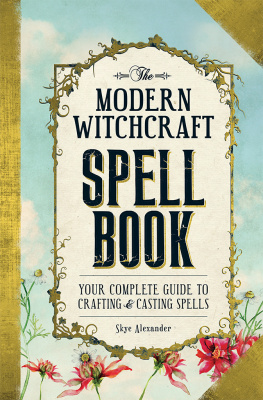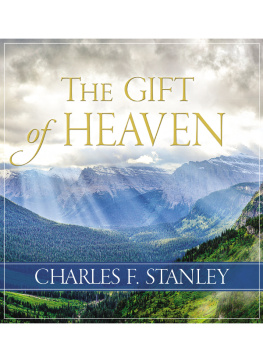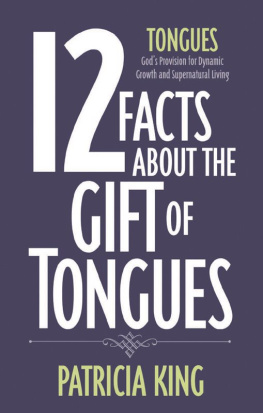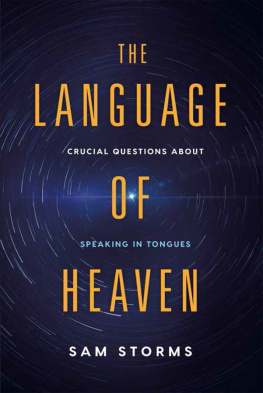A LSO BY E BEN A LEXANDER, M.D.
Proof of Heaven

Simon & Schuster
1230 Avenue of the Americas
New York, NY 10020
www.SimonandSchuster.com
Copyright 2014 by Eben Alexander LLC
Certain names and identifying characteristics have been changed.
All rights reserved, including the right to reproduce this book or portions thereof in any form whatsoever. For information, address Simon & Schuster Subsidiary Rights Department, 1230 Avenue of the Americas, New York, NY 10020.
First Simon & Schuster hardcover edition October 2014
SIMON & SCHUSTER and colophon are registered trademarks of Simon & Schuster, Inc.
The Simon & Schuster Speakers Bureau can bring authors to your live event. For more information or to book an event, contact the Simon & Schuster Speakers Bureau at 1-866-248-3049 or visit our website at www.simonspeakers.com.
Interior design by Akasha Archer
Jacket design by Christopher Lin
Jacket photograph: white lotus CoolKengzz/Shutterstock
Library of Congress Cataloging-in-Publication Data
Alexander, Eben.
The map of heaven : how science, religion, and ordinary people are proving the afterlife / Eben Alexander, M.D., with Ptolemy Tompkins.
pagescm
Includes bibliographical references and index.
1.Future life.2.Heaven.3.Religion and science.I.Title.
BL535.A4552014
202'.3dc232014022311
ISBN 978-1-4767-6639-3 (hardcover)
ISBN 978-1-4767-6640-9 (trade pbk.)
ISBN 978-1-4767-6641-6 (ebook)
To all courageous souls whose loving hearts yearn toward the truth of our existence.
Contents
Introduction

I am the child of earth and starry heaven, but my real race is of heaven.
FRAGMENT FROM AN ANCIENT G REEK TEXT GIVING INSTRUCTIONS FOR THE NEWLY DEAD SOUL ON HOW TO NAVIGATE THE AFTERLIFE
I magine a young couple at their wedding. The ceremony is over, and everyone is crowding around on the church steps for a photo. But the couple, at this particular moment, doesnt notice them. Theyre too concerned with each other. They are looking deep into each others eyesthe windows of the soul, as Shakespeare called them.
Deep . A funny word to describe an action that we know cant really be deep at all. Sight is a strictly physical affair. Photons of light strike the retinal wall at the rear of the eye, a mere inch or so behind the pupil, and the information they deliver is then translated into electrochemical impulses that travel along the optic nerve to the visual processing center in the rear of the brain. Its an entirely mechanical process.
But of course, everyone knows just what you mean when you say youre looking deep into someones eyes. Youre seeing that persons soulthat part of the human being that the ancient Greek philosopher Heraclitus was talking about some 2,500 years ago when he wrote: You would not find the limits of the soul even if you travelled forever, so deep and vast is it. Illusion or not, it is a powerful thing to glimpse that depth when it presents itself.
We see this depth manifested most powerfully on two occasions: when we fall in love, and when we see someone die. Most people have experienced the first, while fewer, in our society where death is so shunted out of sight, have experienced the second. But medical people and hospice workers who see death regularly will know immediately what Im talking about. Suddenly where there was depth there is now only surface. The living gazeeven if the person in question was very old and that gaze was vague and flickeringgoes flat.
We see this when an animal dies, too. The direct avenue into what the twentieth-century scholar of religions Titus Burckhardt called the inward realm of the soul goes dead, and the body becomes, in essence, like an unplugged appliance.
So imagine that bride and groom looking into each others eyes, and seeing that bottomless depth. The shutter snaps. The image is captured. A perfect shot of a perfect pair of young newlyweds.
Now jump ahead half a dozen decades. Imagine that this couple had kids, and that those kids had kids of their own. The man in the picture has died, and the woman now lives alone in an assisted living facility. Her kids visit her, she has friends at the facility, but sometimes, like right now, she feels alone.
Its a rainy afternoon, and the woman, sitting by her window, has picked up that photo from where it sits in a frame on a side table. In the gray light filtering in, she looks at it. The photo, like the woman herself, has taken a long journey to get there. It started out in a photo album that was passed on to one of their children, then went into a frame and came with her when she moved to the facility. Though its fragile, a little yellowed and bent at the edges, it has survived. She sees the young woman she was, looking into the eyes of her new husband, and remembers how at that moment he was more real to her than anything else in the world.
Where is he now? Does he still exist?
On good days, the woman knows he does. Surely the man she loved so much for all those many years could not have simply vanished when his body died. She knowsvaguelywhat religion has to say on the matter. Her husband is off in heaven: a heaven that, through years of more or less steady church attendance, she has professed belief in. Though deep down she has never been all that sure.
So on other daysdays like todayshe doubts. For she also knows what science has to say on this matter. Yes, she loved her husband. But love is an emotion, an electrochemical reaction that goes on deep inside the brain, releasing hormones into the body, dictating our moods, telling us whether to be happy or sad, joyous or desolate.
In short, love is unreal.
What is real? Well, thats obvious. The molecules of steel and chrome and aluminum and plastic in the chair she sits in; the carbon atoms that make up the paper of the photo she holds in her hand; the glass and wood of the frame that protects it. And of course the diamond on her engagement ring and the gold of which both it and her wedding ring are made: those are real, too.
But the perfect, whole, and everlasting bond of love between two immortal souls that these rings are meant to signify? Well, thats all just pretty-sounding fluff. Solid, tangible matter: thats whats real. Science says so.

The inside is your true nature.
AL-GHAZALI, ELEVENTH-CENTURY ISLAMIC MYSTIC
The root of the word reality is the Latin word res thing. The things in our lives like car tires, skillets, soccer balls, and backyard swing sets are real to us because they possess a day-in, day-out consistency. We can touch them, weigh them in our hands, put them down, and come back later and find them unchanged, right where we left them.
We, of course, are made of matter as well. Our bodies are made of elements like hydrogen, the earliest and simplest element, and more complex ones like nitrogen, carbon, iron, and magnesium. All of these were cooked upcreatedat inconceivable pressure and heat, in the hearts of ancient, now long-dead stars. Carbon nuclei have six protons and six neutrons. Of the eight positions in its outer shell where its electrons orbit, four are occupied by electrons, and four are vacant, so that electrons from other atoms or elements can link up with the carbon atom by binding their own electrons to those empty positions. This particular symmetry allows carbon atoms to link together with other carbon atoms, as well as other kinds of atoms and molecules, with fantastic efficiency. Both organic chemistry and biochemistrymassive subjects that dwarf chemistrys other subsetsare exclusively devoted to studying chemical interactions involving carbon. The entire chemical structure of life on earth is based on carbon and its unique attributes. It is the lingua franca of the organic chemical world. Thanks to this same symmetry, carbon atoms, when submitted to tremendous pressure, lock together with a new tenacity, transforming from the black, earthy stuff we associate it with into that most powerful natural symbol of durability, the diamond.


















